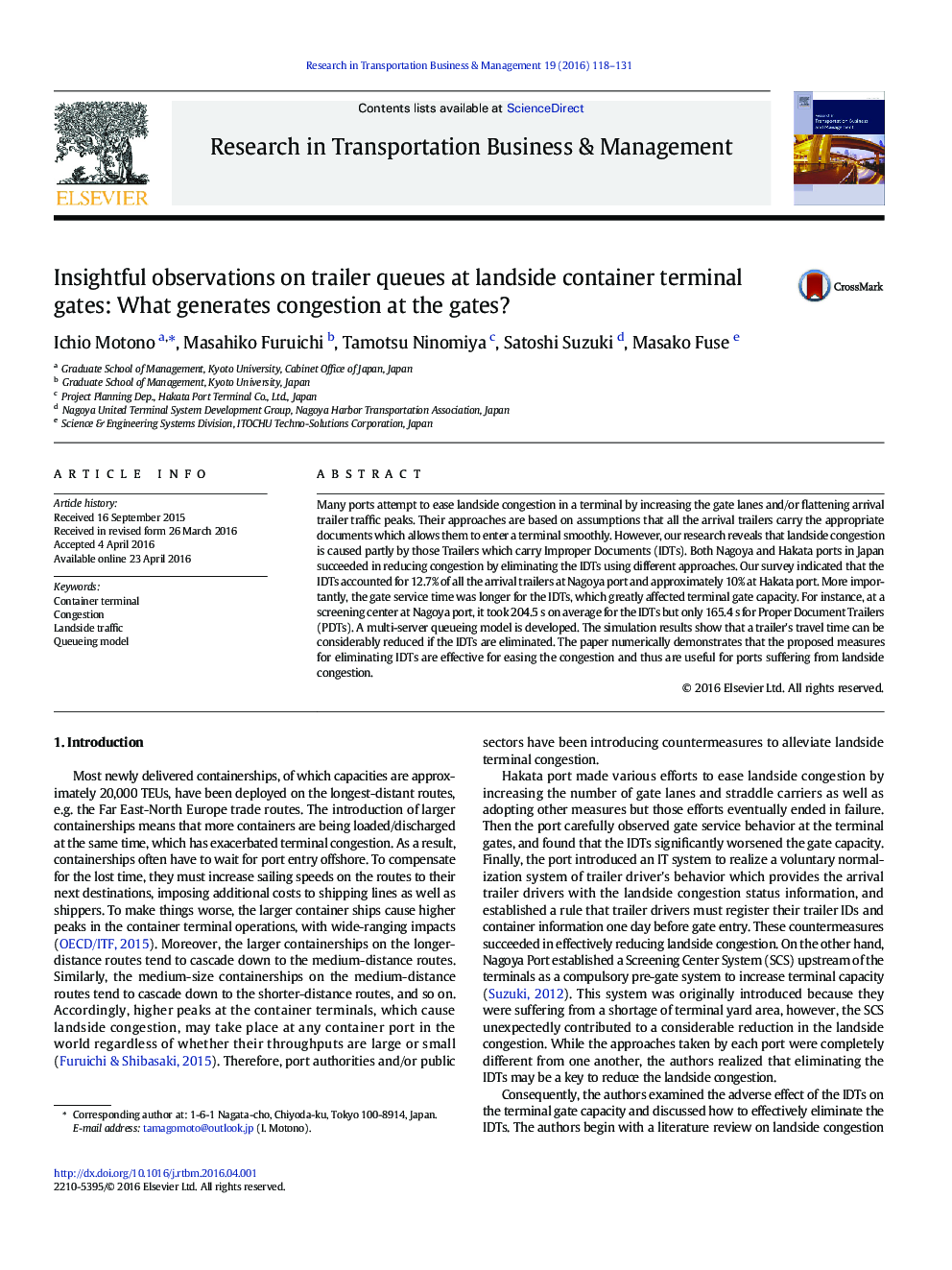| کد مقاله | کد نشریه | سال انتشار | مقاله انگلیسی | نسخه تمام متن |
|---|---|---|---|---|
| 1000778 | 1481595 | 2016 | 14 صفحه PDF | دانلود رایگان |
Many ports attempt to ease landside congestion in a terminal by increasing the gate lanes and/or flattening arrival trailer traffic peaks. Their approaches are based on assumptions that all the arrival trailers carry the appropriate documents which allows them to enter a terminal smoothly. However, our research reveals that landside congestion is caused partly by those Trailers which carry Improper Documents (IDTs). Both Nagoya and Hakata ports in Japan succeeded in reducing congestion by eliminating the IDTs using different approaches. Our survey indicated that the IDTs accounted for 12.7% of all the arrival trailers at Nagoya port and approximately 10% at Hakata port. More importantly, the gate service time was longer for the IDTs, which greatly affected terminal gate capacity. For instance, at a screening center at Nagoya port, it took 204.5 s on average for the IDTs but only 165.4 s for Proper Document Trailers (PDTs). A multi-server queueing model is developed. The simulation results show that a trailer's travel time can be considerably reduced if the IDTs are eliminated. The paper numerically demonstrates that the proposed measures for eliminating IDTs are effective for easing the congestion and thus are useful for ports suffering from landside congestion.
Journal: Research in Transportation Business & Management - Volume 19, June 2016, Pages 118–131
